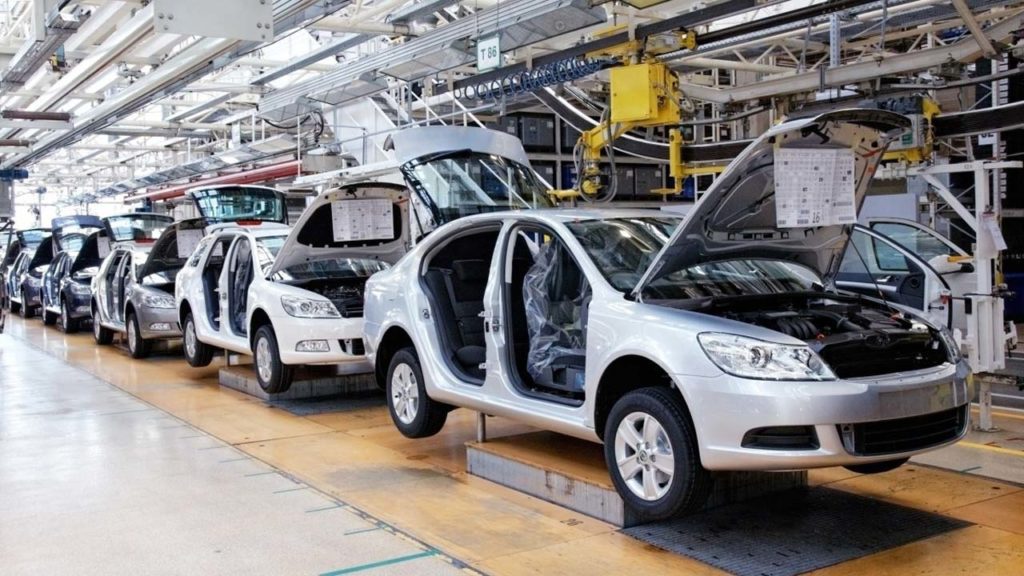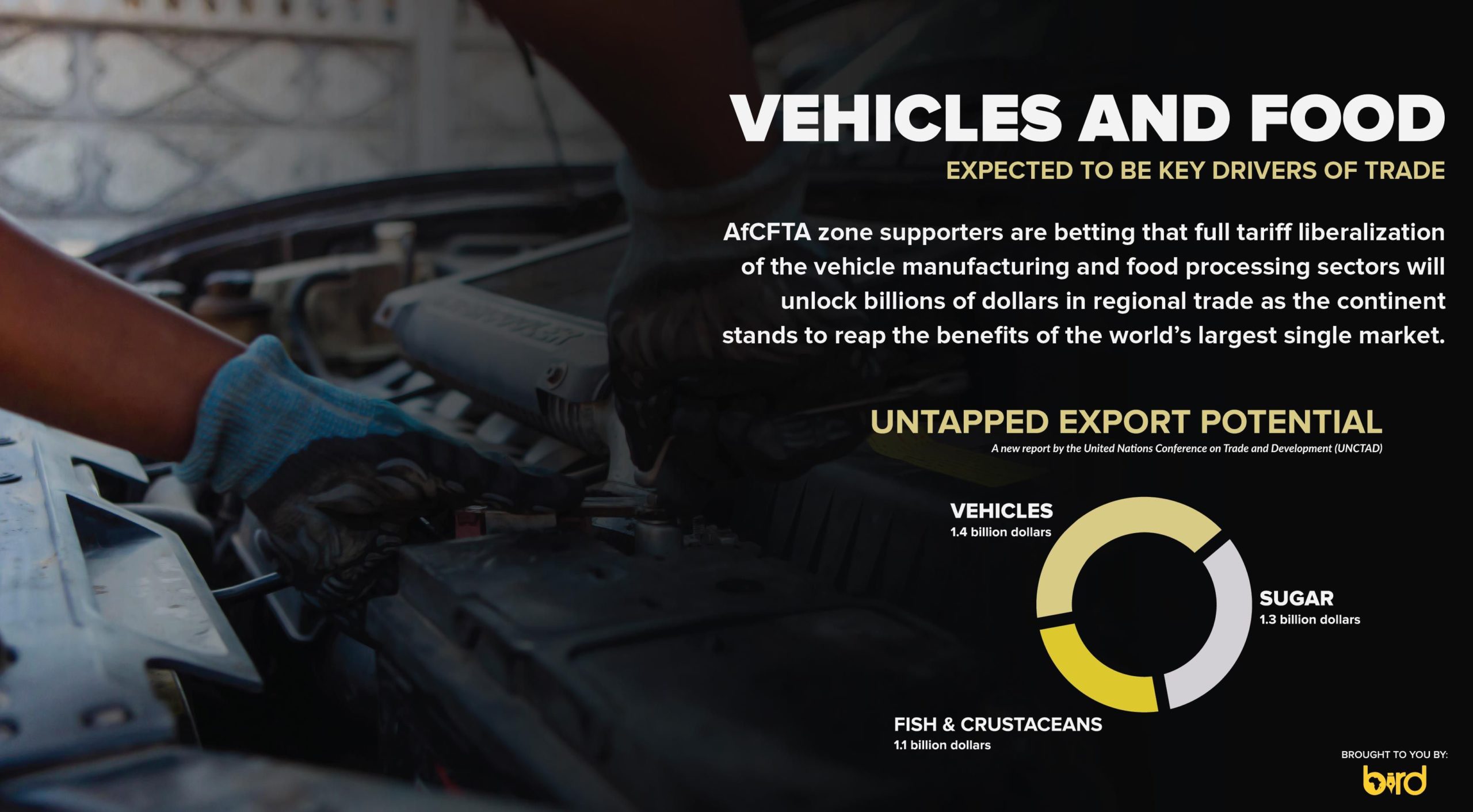This article was contributed to TechCabal by Conrad Onyango/bird
AfCFTA zone supporters are betting that full tariff liberalization of the vehicle manufacturing and food processing sectors will unlock billions of dollars in regional trade as the continent stands to reap the benefits of the world’s largest single market.
Vehicle manufacturing and food processing have been touted as the next big drivers of Intra-African trade as the single largest world market-AfCFTA readies to enter its second implementation phase in less than a month.
A new report, Economic Development in Africa 2021, “reaping the potential benefits of the African Continental Free Trade Area for inclusive growth” by the United Nations Conference on Trade and Development (UNCTAD) shows vehicles have the largest untapped export potential of 1.4 billion dollars, followed by sugar (1.3 billion) and fish and crustaceans (1.1 billion dollars) processing.
Anticipated population and economic growth, as well as tariff liberalization under the AfCFTA, are seen unlocking these sectors, with a potential multi-billion dollar windfall for African economies.
“The sector expected to realize the largest export potential following the tariff liberalization is the vehicles industry. Overall, tariff liberalization promises an additional export potential of 18 per cent by 2025,” according to the report.
Lately, there has been a fresh demand for new vehicles on the continent, driven by a rising middle class with a taste for new vehicles – at the expense of second-hand vehicles imported from overseas markets like Dubai and Japan.
The African Association of Automotive Manufacturers sees development of regional value chains driving new vehicle sales from its current 1 million to 5 million units annually in Africa.
Research firm, Modor Intelligence shows that by 2023, West and North African countries will be key drivers of growth in the automotive sector with Morocco and Ghana being touted as the next-biggest players, adding to sales from South Africa, which is currently responsible for 85 percent of all vehicle sales in Africa. South Africa and Morocco both have hugely ambitious vehicle export strategies.

When it comes to food, Africa’s fish market will be driven by a huge preference for Tilapia, with Aqua-Spark’s new Aqua Insights report showing the continent will consume up to three times (29 million tons annually) the amount it does now, through 2050 – up from 10 million tons currently.
“The sectors gaining the most from the tariff liberalization are the ones that also promise to have a growing export potential based on supply and demand developments over the next five years,” said the report.
Copper, electric goods and machinery as well as cereals, and the iron and steel sectors present huge untapped opportunities to unlock Africa’s intra-African trade potential.
By 2025, the UNCTAD report projects, Intra- African trade will rise by 9.2 billion dollars through partial tariff liberalization under the AfCFTA.
“The African Continental Free Trade Area has the potential to harmonize national and regional objectives through a coherent and integrated policy framework, including in the context of phase II of implementation of the African Continental Free Trade Area Agreement, on investment and competition policies,” said the report.
In November, AfCFTA Secretary-General Wamkele Mene said 41 states that have signed and ratified the agreement have committed to eliminating import duties of 97 percent of goods traded on the continent and addressing non-tariff barriers over a phased period, under the liberalization of trade.
UNCTAD puts Africa’s total untapped export potential of intra-African trade at 21.9 billion dollars- if all countries liberalized fully within five years.
GDP and population growth are expected to boost supply and demand for goods and commodities to unlock the bulk of the untapped trade and investment potential (13.3 billion dollars) while removal of current market frictions in African trade could yield up to 8.9 billion dollars.
Smaller African countries have the largest potential to unlock the trade billions but are overshadowed by their bigger peers in absolute terms due to their significantly larger economies.
According to the report, Carbo Verde, Equatorial Guinea and Gambia have the largest projected untapped potential.
These countries, together with Somalia and South Sudan are all expected to increase their export potential in Africa by more than 100 per cent.
South Africa (7.9 billion dollars) leads Egypt, Morocco and Côte d’Ivoire in absolute terms.
UNCTAD’s Review of Maritime Transport 2021 published in November, sees AfCFTA boosting intra-African trade by about 33 percent and cutting Africa’s trade deficit by 51 percent.











